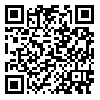BibTeX | RIS | EndNote | Medlars | ProCite | Reference Manager | RefWorks
Send citation to:
URL: http://yjdr.ssu.ac.ir/article-1-103-en.html
Introduction: This study aimed to determine the effect of various scan delays, various Kilovotages and light storing conditions on the diagnostic accuracy of proximal caries detection in digital radiographic images obtained by the Photostimulable phosphor plates (PPP).
Methods: In this experimental and analytieal study, 45 non-cavitated permanent premolar and molar teeth with or without inter-proximal caries were radiographed using the DIGORA®PSP. The Plates were exposed at 60 (Kvp) and 70 (Kvp) and then were scanned immediately and 10 min, 30 min, 1, 6, 24 and 48h after the exposure. Within the exposure-to-scan priod, the plates were divided into two groups which the first group was stored in daylight and the second group was in a light-tight box. The diagnostic accuracy of caries was performed by scoring all the digital images. The true presence of caries was determined by dividing the teeth into two segments mesiodistally. The accuracy was reported as the area under Rock curve(Az). The Azs were compared using SPSS software (ver, 17) via two-way ANOVA and t-test. Moreover, Kappa was used to measure inter and intraobserver agreement.
Results: The study results revealed no significant difference between immediately scanned Azs at 60 and 70 Kvp (P-value >0.05). The immediately scanned Az at 60Kvp was significantly higher than the Azs with 6h, 24h and 48h scan delays (P <0.05). Furthermore, the immediately scanned Az at 70Kvp was significantly higher than the Azs with 1, 6, 24 and 48h scan delays(P-value <0.05).
Conclusion: PSP scanning should not be delayed beyond 30 min in order to have an accurate proximal caries diagnosis. Longer delays may cause loss of quality of images.
Received: 2016/01/31 | Accepted: 2016/01/31 | Published: 2016/01/31
| Rights and permissions | |
 |
This work is licensed under a Creative Commons Attribution-NonCommercial 4.0 International License. |





